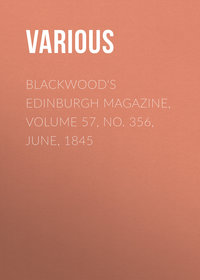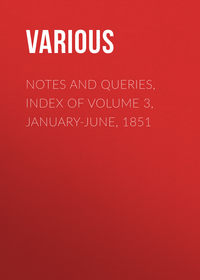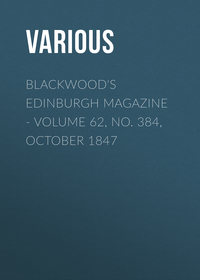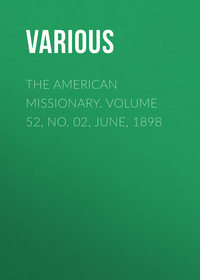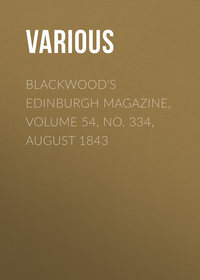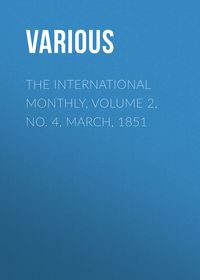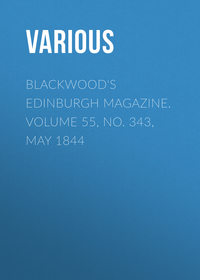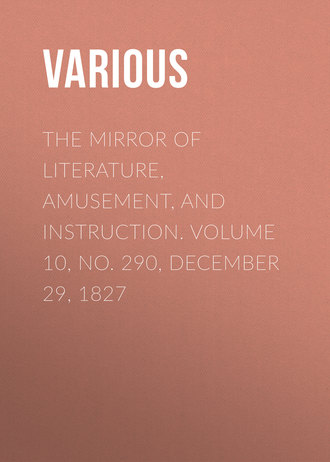 полная версия
полная версияThe Mirror of Literature, Amusement, and Instruction. Volume 10, No. 290, December 29, 1827

Various
The Mirror of Literature, Amusement, and Instruction / Volume 10, No. 290, December 29, 1827
OLD SARUM
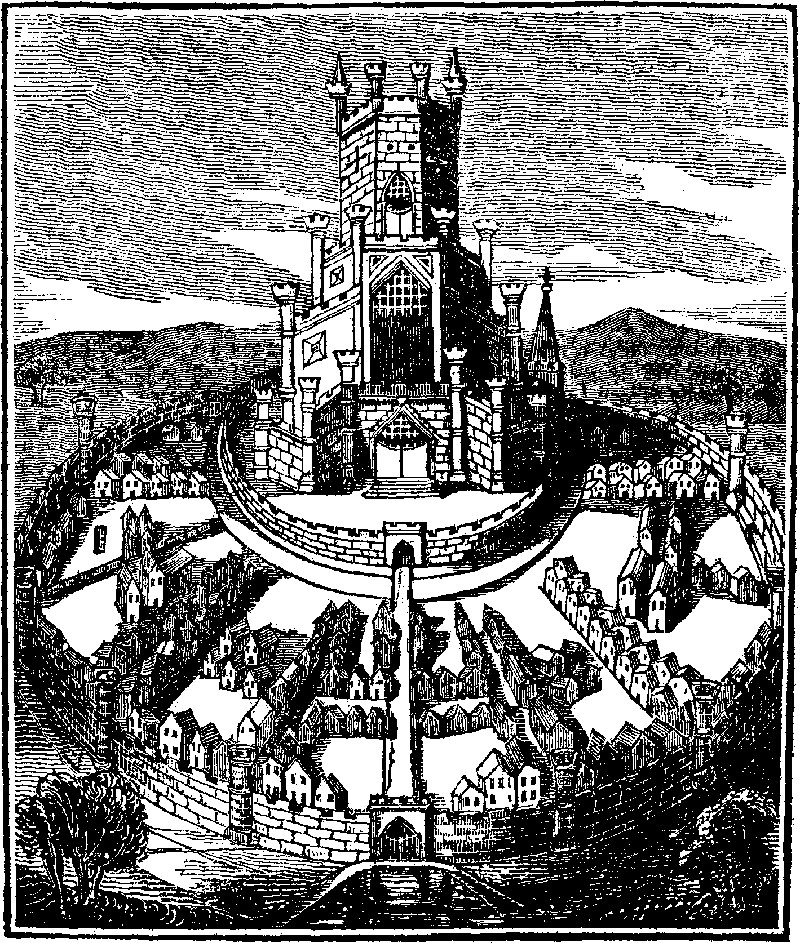
Among the earliest antiquarian records, Old Sarum is described as a city of the Belgae; and its historical details have proved an exhaustless mine for the researches of topographical illustrators.
Thus, Sir R.C. Hoare describes it as "a city of high note in the remotest periods by the several barrows near it, and its proximity to the two largest Druidical temples in England, namely, Stonehenge and Abury."1
"Ancient Wilts,"—Sir R.C. Hoare, speaking of Stonehenge, expresses his opinion that "our earliest inhabitants were Celts,X– expresses his opinion that "our earliest inhabitants were Celts, who naturally introduced with them their own buildings customs, rites, and religions ceremonies, and to them I attribute the erection of Stonehenge, and the greater part of the sepulchral memorials that still continue to render its environs so truly interesting to the antiquary and historian." Abury, or Avebury, is a village amidst the remains of an immense temple, which for magnificence and extent is supposed to have exceeded the more celebrated fabric of Stonehenge; Some enthusiastic inquirers have however, carried their supposition beyond probability, and in their zeal have even supposed them to be antediluvian labours! Many of the barrows in the vicinity of Sarum have been opened, and in them several antiquarian relics have been discovered. In short, the whole county is one of high antiquarian interest, and its history has been illustrated with due fidelity and research.
The Romans held it as a strong military station, and it was admitted to the privileges of the Latin law, under the name of Sorbiodunum;2
Under the Saxons it ranked among the most considerable towns of the West kingdom, and possessed ecclesiastical establishments soon after the conversion of the Saxons to Christianity.3
In the early part of the ninth century it was the frequent residence of Egbert; and in 960, Edgar assembled here a national council to devise the best means of repelling the Danes in the north.4
Arthur commanded it to be more strongly fortified by another trench and high palisadoes.5
In 1086, William the Norman convened in this city the prelates, nobles, sheriffs, and knights of his new dominions, there to receive their homage;6 and probably, within its walls was framed the feudal law, as Domesday Book was commenced in the same year.
Two other national councils were held here; one by William Rufus, in 1096, and another by Henry I in 1116.7
Peter of Blois, an early ecclesiastical writer, described Old Sarum as "barren, dry, and solitary, exposed to the rage of the wind; and the church (stands) as a captive on the hill where it was built, like the ark of God shut up in the profane house of Baal."8
Such are a few of the chronological data of the principal events in the history of Old Sarum; these, however, will suffice to elucidate the antiquity of the city, and from their historical importance cannot fail to make the preceding engraving a subject of general as well as of local interest, especially as it represents the old city, previous to its reduction in 553.
Scarcely a vestige of human habitation now remains of Old Sarum, as we have shown once a place "of great importance—and a city adorned with many proud structures—a splendid cathedral and other churches—a castle with lofty towers and ramparts—regular streets and houses—and once the residence of a numerous population." But all these have passed away, and nought is left to tell the tale of their greatness, but a few crumbling wrecks of massy walls; whilst vast fosses and elevated ramparts remain to mark it as the site of desolating war. The contrast of time-worn ruins with their surounding scenes of luxuriant nature is affecting even to melancholy. A recent visiter to the area of Old Sarum describes "a field of oats flourishing on the very spot where the crowded street had formerly extended itself; and a barrier existing to the further progress of agriculture, by the remains of the cathedral, castle, &c. forming heaps of rubbish barely covered with scanty and unprofitable verdure."
The space occupied by the ancient city is stated to have been nearly 2,000 feet in diameter, surrounded with a fosse, or ditch, of immense depth, and two ramparts, inner and outer: on the inner, which was much higher than the outer, stood a wall nearly 12 feet thick at its foundation, of flint and chalk, strongly cemented together, and cased with hewn stone, on which was a parapet with battlements. In the centre, on the summit of the hill, stood the castle or citadel, surrounded with a very deep intrenchment and a high rampart; and in the area beneath, forming a wide space between the inner and outer ramparts, stood the city, divided into equal parts, north and south; near the middle of each division was a gate—these two being the grand entrances, with a tower and mole over and before each. Besides these were ten other towers, at equal distances round the city; and opposite them, in a straight line with the castle, were built the principal streets, intersected in the middle with one grand circular street, encompassing the whole city. In the angle to the north-west stood the cathedral, and episcopal palace, and the houses of the clergy.
The area of the city was also divided into nearly equal parts by intrenchments and ramparts thrown up, by which means if one part was taken, the other was still defensible; and if the whole of the out-works were in the hands of the enemy, the besieged could retire to the castle, whose walls were impregnable. There appears to have been but one entrance to the castle, on the east. There were five wells, four in the city and one in the castle, designed chiefly to support the garrison and inhabitants in time of war, or during a siege.
The decline of Sarum, which was very rapid, has been traced to a disagreement between the civil and ecclesiastical authorities. During the reign of Henry I. the bishop of Old Sarum, who rose to that dignity, from being a parish priest at Caen, was entrusted with the keys of the fortress. The bishop, however, fell into disgrace, the king resumed the command of the castle, and the military openly insulted the disgraced prelate and the clergy. These animosities increasing, the Empress Maude bestowed many gifts upon the cathedral, and added much land to its grants. Herbert, a subsequent bishop of the see, attempted to remove the establishment, but its execution was reserved for his brother and successor, Richard Poor, whose monument is in the south chancel of the present cathedral at Salisbury. This was about the year 1217, from which time the inhabitants of Old Sarum removed their residence, and pulled down their dwellings, with the materials of which they constructed their new habitations: and as one city increased in population and extent, so the other almost as rapidly decayed. Hence the establishment of New Sarum, or Salisbury.
In the reign of Edward II. Sarum possessed the privilege of sending two members to parliament, a privilege which it still retains.
CHRISTMAS CUSTOMS
(For the Mirror.)The manner of spending Christmas Eve can hardly be better described than by the celebrated Wilkie's sketch under that title. Christmas is not now what it was formerly. Wilkie's painting relates to the present time, and I do not know where Christmas is more cheerfully observed in these days than in London—still there is an alteration—no boar's head—no pageantries, no wassailing. In the north of England its approach is denoted by the country people having their wood fires, consisting of huge pieces of stumps of trees piled upon the grate, and by entwining branches of holly over their doors, and by school boys acting some play to a school full of auditors; the yearly one at Brough was St. George, which is now put down by some strolling players who exhibit in the town every Christmas.
These are signals for Christmas, and although there is but one Christmas day, yet the week is generally over before any thing like quietness appears. The morning is ushered in by the ringing of the church bells, and the little maidens playing at the game of prickey sockey, as they call it. See them all dressed up in their best, with their wrists adorned with rows of pins, running about from house to house inquiring who will play at the game. The door is opened, and she cries out,
"Prickey Sockey, for a pin,I CAR not whether I LOSS or win."The game is played by the one holding between her two fore-fingers and thumbs a pin, which she clasps tightly to prevent her antagonist seeing either part of it, while her opponent guesses. The head of the pin is sockey, and the point prickey, and when the other guesses, she touches the end she guesses at, saying, "this for prickey," or "this for sockey;" at night the other delivers her two pins. Thus the game is played and when the clock strikes twelve it is declared up, that is, no one can play after that time.
The Christmas dinner consists of large pork or goose pies, which Brand mentions as peculiar to this county; the goose is put in whole; they are all marked on the top by a fork with the owner's initials; formerly it was a religious inscription. In the afternoon (be it spoken perhaps to their shame) they sally forth for a game at foot-ball, the first day on which the game is played, the ball is what they call clubbed up for, and he who can run away with the ball may keep it; but this seldom occurs, as it is kicked to pieces before the game is over. And this is Christmas Day here. At Kirby, a man named Tom Mattham (since deceased) used to go round the town on Christmas Eve, about twelve o'clock, with a bell, and chant a few carols; this was too solemn to be compared to the London waits, but the custom still exists.
In most of the western parts of Devonshire a superstitions custom prevails, that on Christmas Eve, at twelve o'clock, oxen in their stalls are always kneeling, as in the attitude of devotion; but since the style was altered, they do this on Old Christmas Eve only. At Whitbeck, in Cumberland, they have a similar superstition; the bees are said to sing on the midnight before Christmas Day, and the oxen to kneel at the same hour.
In many parts of the north too it should be observed, it is customary for men to go out and cut large ash and holly sticks and entwine them over the doors of their houses. And in Cumberland, little maidens assemble on Christmas to guess who their husband shall be, which is done by collecting peculiar sticks, and looking for some singular mark upon them. This is the time when sweethearts too send round their presents to the young lasses, by whom others are returned.
The custom of keeping open house is, I think, obsolete. Haddon Hall (so late as Queen Elizabeth) was kept open during twelve days after Christmas, with the old English hospitality. I observe also in some old books accounts of a feast of "cakes and ales" being usual.9
In the book of Christmasse Carolles, by Wynkyn de Worde in 1521, are the following verses on bringing in the Boar's head:—
"A Carrol bryngyne in the boar's head,Caput Apri defero.Redden laudes Domino."The bore's head in hande brynge I,With garlaudes gay and rosemaryI praye you all synge merely,Qui estis in convivio."The bore's head I understandeIs the chefe servyce in this lande,Looke wherever it be fand,Servite cum cantico."Be gladde both man and lasseFor this hath ordayned our stewardeTo chere you all this ChristmasseThe bore's head with mustarde."Upon the young prince's coronation, 1170, Henry II. "served his son at the table as server, bringing up the bore's head with trumpets before it, according to the manner."—Hollinshed.
The boar's head was stuffed "with branches of rosemary, "it appears with trumpets playing, so that "it was a grande syghte."
It would appear they had grand doings at the inns of court during Christmas. The usual dish at the first course at dinner was "a large bore's head upon a silver platter, with minstralsye."—Dugdale's Orig. Jur.
Before the last civil wars, the first diet in gentlemen's houses that was brought to table at Christmas was a boar's head with a lemon in his mouth. At Queen's College, Oxford, the custom is retained; the bearer of it brings it into the hall singing to an old tune, an old Latin rhyme, Caput Apri Defero, &c.
Formerly, "An English gentleman at the opening of the great day, i.e. on Christmas Day in the morning, had all his tenants and neighbours enter his hall by day-break. The strong beer was broached, and the black jacks went plentifully about with toast, sugar, nutmeg, and good Cheshire cheese. The hackin (the great sausage) must be boiled by day-break, or else two young men must take the maiden (the cook) by the arms, and run her round the market-place till she is ashamed of her laziness."—From an old Tract, "Round about our Coal Fire, or Christmas Entertainments."
Further, from the same Tract we find that "In Christmas holidayes," the tables were all spread from the first to the last; the sirloins of beef, the minched pies, the plum porridge, the capons, turkeys, geese and plum-puddings, were all brought upon the board, every one ate heartily and was welcome, which gave rise to the proverb, "merry in the hall, where beards wag all."
Misson says, "the plum-porridge is not at all inferior to the pie;" the goose pie usually made at Christmas.
Yule Cakes.—I must now call your attention to the Yule Cakes. Yule dough a little image of paste, was formerly baked at Yuletide, and presented by bakers to their customers, as Christmas candles are given away by tallow chandlers. Brand says, "the Yule dough has perhaps been intended for an image of the child, Jesus, with the Virgin Mary," and he says, "it is now, if I mistake not, pretty generally laid aside, or at most retained only by children." Mr. Brand was not aware that the custom still prevailed in many parts in the north. At Brough I have frequently ate of the cakes; they are figured with currants, and are usually eaten with a basin of frumity on Christmas Eve. Mince pies are there called minched, or shrid pies.
The custom of decking our houses and churches with holly, &c. originates from ancient heathenish practices. Mr. Brand says, that "holly was used only to deck the inside of houses at Christmas, while ivy was used not only as a vintner's sign, but also among the evergreens at funerals." Archdeacon Nares mentions "the custom longest preserved, was the hanging up of a bush of mistletoe in the kitchen or servant's hall, with the charm attached to it, that the maid who was not kissed under it at Christmas would not be married in that year." In the north a similar custom is observed, viz. that of kissing a maiden over a bunch of holly. Polydore Virgil says, that "Trimmyng of the temples with hangynges, flowers, boughs, and garlandes, was taken of the heathen people, whiche decked their idols and houses with such arraye."
Round about our Coal Fire.—Formerly fires were in the middle of the room, and the company sat in a ring round about it, hence the proverb, "round about our coal fire," which is as great a comfort as any at Christmas.
In the north they have their Yule log, or Yuletide log, which is a huge log burning in the chimney corner, whilst the Yule cakes are baked on a "girdle," (a kind of frying pan) over the fire; little lads and maidens assemble nightly at some neighbouring friend's to hear the goblin story, and join in "fortune telling," or some game. There is a part of an old song which runs thus: and with which I shall conclude this custom
"Now all our neighbours chimnies smoke,And Christmas logs are burning,Their ovens they with baked meate choke,And all their spits are turning."And in another place we hear that
"The wenches with their wassell bowlesAbout the streete are singing."Wassail-bowl.—Formerly it was customary to wassail on Christmas Eve, or drink health to the apple trees.
"Wassaile the trees that they may beareYou many a plum and many a peare,For more or lesse fruits they will bringe,And do you give them wassailing."HERRICK.Sir Thomas Acland informed Mr. Brand, in 1790, that at Werington, on Christmas Eve, "it was then customary for the country people to sing a wassail or drinking song, and throw the toast from the wassail-bowl to the apple-trees, in order to have a fruitful tree."
In many towns in Cumberland it is the practice on Christmas Eve to roast apples before the fire on a string, and hold under them a bowl of spiced ale (called there mulled ale) and let them roast on until they drop into the ale.
We have the following picture of a country squire from Grose:—"His chief drink the year round was generally ale, except at this season, the fifth of November, or some other gala days, when he would make a bowl of strong brandy punch, garnished with a toast and nutmeg. In the corner of his hall by the fire-side stood a large wooden two-armed chair, and within the chimney corner were a couple of seats. Here at Christmas he entertained his tenants assembled round a globing fire made of the roots of trees and other great logs, and told and heard the traditionary tales of the village, respecting ghosts and witches, till fear made them afraid to move. In the mean time the jorum of ale was in continual circulation."
Christmas Presents.—A friend of mine at Appleby, in Westmoreland, who is aware of my writing this article, says, "Pray recollect the old custom we have here of making little presents one to another. You know it is the practice here for little girls to send numerous presents to their sweethearts, secured as tightly with wax and brown paper as can be, that they may be some time guessing what it is before they open it. And if it is worth remarking, I would further remind you of the sending of shrid pies (which you know are very excellent) as presents to neighbours."
In London enough is seen of the presents at Christmas, without describing them; and after a "day spent merrily," they in the evening commence card playing, which is kept up till morning, generally speaking, and from thenceforth a whole run of merry days, till and beyond Twelfth Day.
Soon after Christmas Day we are apprized of Twelfth Day (which keeps us from dulness) by the icy cakes which everywhere appear in the pastrycook's windows. And now I think I have as far as I am able fulfilled my promise, and I may perhaps conclude this article with wishing you and all your readers and correspondents a merry Christmas and a happy new year.
W.H.HRECOLLECTIONS OF MELROSE ABBEY
(For the Mirror.)"I do love these ancient ruins;We never tread upon them, but we setOur foot upon some reverend history."This fine ruin has a double interest attached to it, for, independent of that which is created by the antiquity and splendour of the edifice, the visiter should bear in mind that it is the Kennaquhair of the northern magician; and here the scenes so finely depicted in the Monastery are vividly brought to our recollection; it gives a "local habitation and a name" to some of the most interesting creations of Sir Walter Scott's genius. The abbey is situated in a valley, surrounded by the Eildon hills. Some ruins of the abbey mill, with the dam belonging to "Hob Miller," the father of the "lovely Mysinda," are still to be seen; and the ford across the Tweed, where the worthy Sacristan was played so scurvy a trick by the White Lady, is also pointed out. Some miles off, on a wild and romantic spot on the course of the river, Elwin, or Allan, is Fairy Dean, or Nameless Dean, which is at once identified to be that place above the tower and vale of Glendearg, which was the favourite haunt of the White Lady, and the spot where Sir Piercie Shafton's stoccatas, embroccatas, and passados first failed him, when opposed to the less polished and rustic skill of Halbert Glendinning, assisted by the machinations of the queen of the elfin tribe. On this place are found a number of small stones, of a singular shape and appearance, resembling guns, cradles with children in them, bonnets, &c., several of which I obtained in a tour to Scotland. They are called elf-stones by the neighbouring peasantry.
Many parts of the abbey are still in a state of tolerable preservation; the marks of cannon-shot and fire are visible on the walls in some places, the abbey having been bombarded by Oliver Cromwell, with his usual zeal against every thing that adorned the country. Many Roman medals of Vespasian, Adrian, &c. have been found about it. I hardly know a more interesting place to visit than Melrose and its neighbourhood; while the abbey affords a fine moral lesson on the instability and perishableness of even the most magnificent works raised by human skill and industry.
"Here naked stand the melancholy walls,Lash'd by the wint'ry tempests, cold and bleak,That whistle mournful through the empty aisles,And piece-meal crumble down the towers to dust,"When viewed by moonlight, the solemnity and grandeur of the effect is charming. An enthusiastic friend of mine, on paying the abbey a visit a year or two ago, had it lighted up with tapers. I subjoin a few passages from a letter I received at the time from him;—"Yesterday, being Valentine's day, in the evening I went to vespers, and had six tapers burning at the high altar in the abbey; also several in each of the (eight) confessionals, holy water, fonts, shrines, and altars.—The church-yard, the abbey, were silent as the grave; you might have heard a pin drop; there was not a breath of air stirring, so the tapers burnt, beautifully." This must have strongly reminded the spectator of the introduction to the Monastery, and the visit of the worthy benedictine, accompanied by Captain Clutterbuck, for the purpose of taking up his patron's heart. My friend adds, "not a taper has been burnt in St. Mary's of Melrose since the days of Knox.—On Monday I went to the tower of Glendearg; at the fountain, where Sir Piercie Shafton and Halbert Glendinning fought, I got, with the help of my guide, some curious stones, said to be the work of the White Lady." The scenery is picturesque in the highest degree. "Yesterday I went to Old Melrose. The windings of the Tweed there are beautiful; but the tolling the abbey bell recalls me from my wanderings."
The impression made on Sir Walter Scott by the ruins may be inferred from the following lines:—
"If thou would'st view fair Melrose aright,Go visit it by the pale moonlight;For the gay beams of lightsome dayGild but to flout the ruins grey.When the broken arches are black in night,And each shafted oriel glimmers white;When the cold light's uncertain showerStreams on the ruin'd central tower,When buttress and buttress, alternately,Seem framed of ebon and ivory;When silver edges the imagery,And the scrolls that teach thee to live and die;When distant Tweed is heard to rave,And the owlet to hoot o'er the dead man's grave;Then go—but go alone the while—Then view St. David's ruin'd pile;And home returning, soothly swear,Was never scene so sad and fair!"One of your correspondents (with whom I had once a disputation on the weighty subject of ghosts) sent you a version of the subjoined epitaph, with a trifling alteration in the spelling, (which is copied from a very ancient tomb-stone in Melrose Abbey,) with these remarks, (see MIRROR, vol. 4, p. 392):—"The following beautiful lines were written by a cow-boy [!] in Sussex on a wall, with a piece of red chalk, [mark the precision.] They have only been inserted in a Sussex paper, and may be quite unknown to many London readers," &c. &c. &c. This is a regular hoax.


